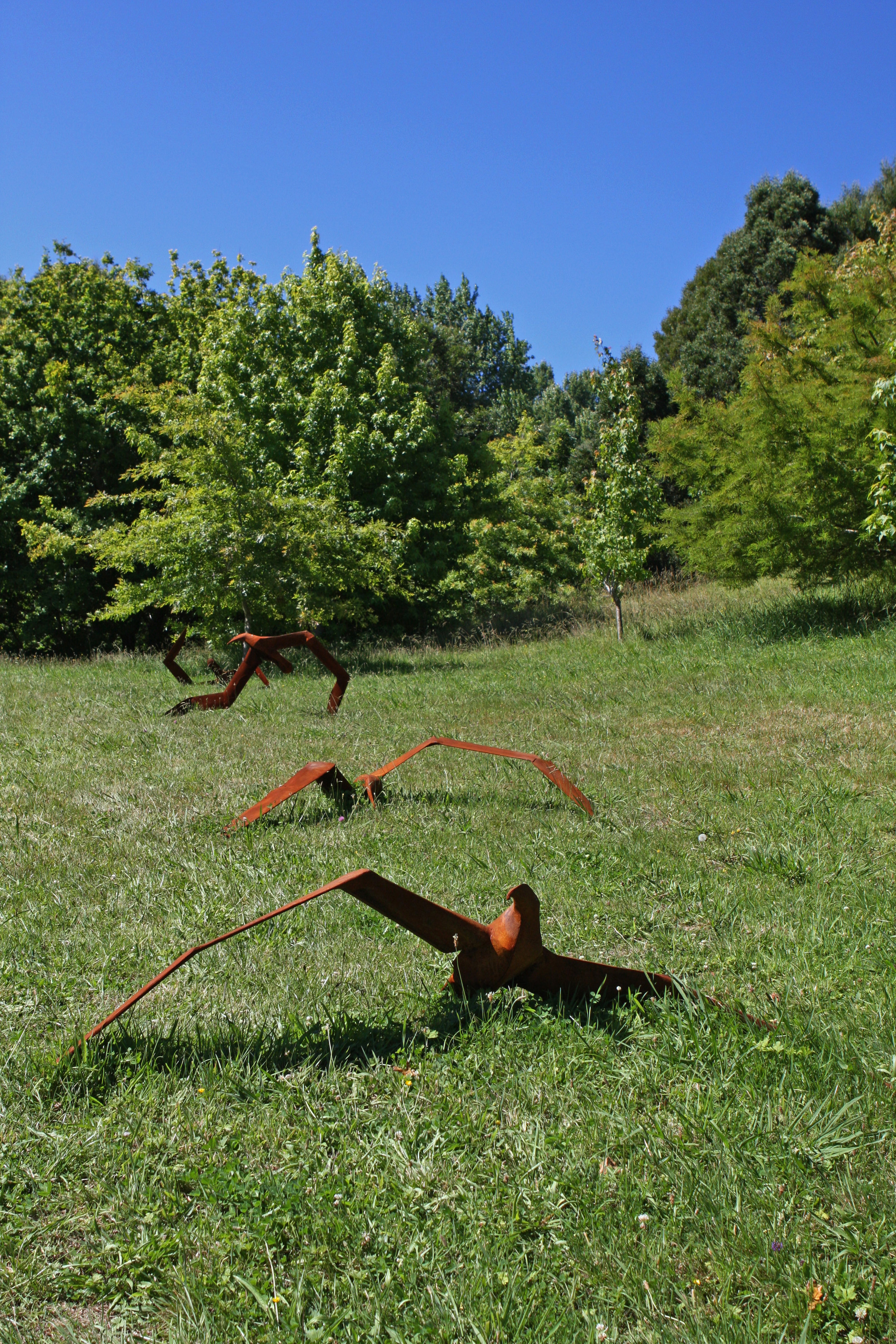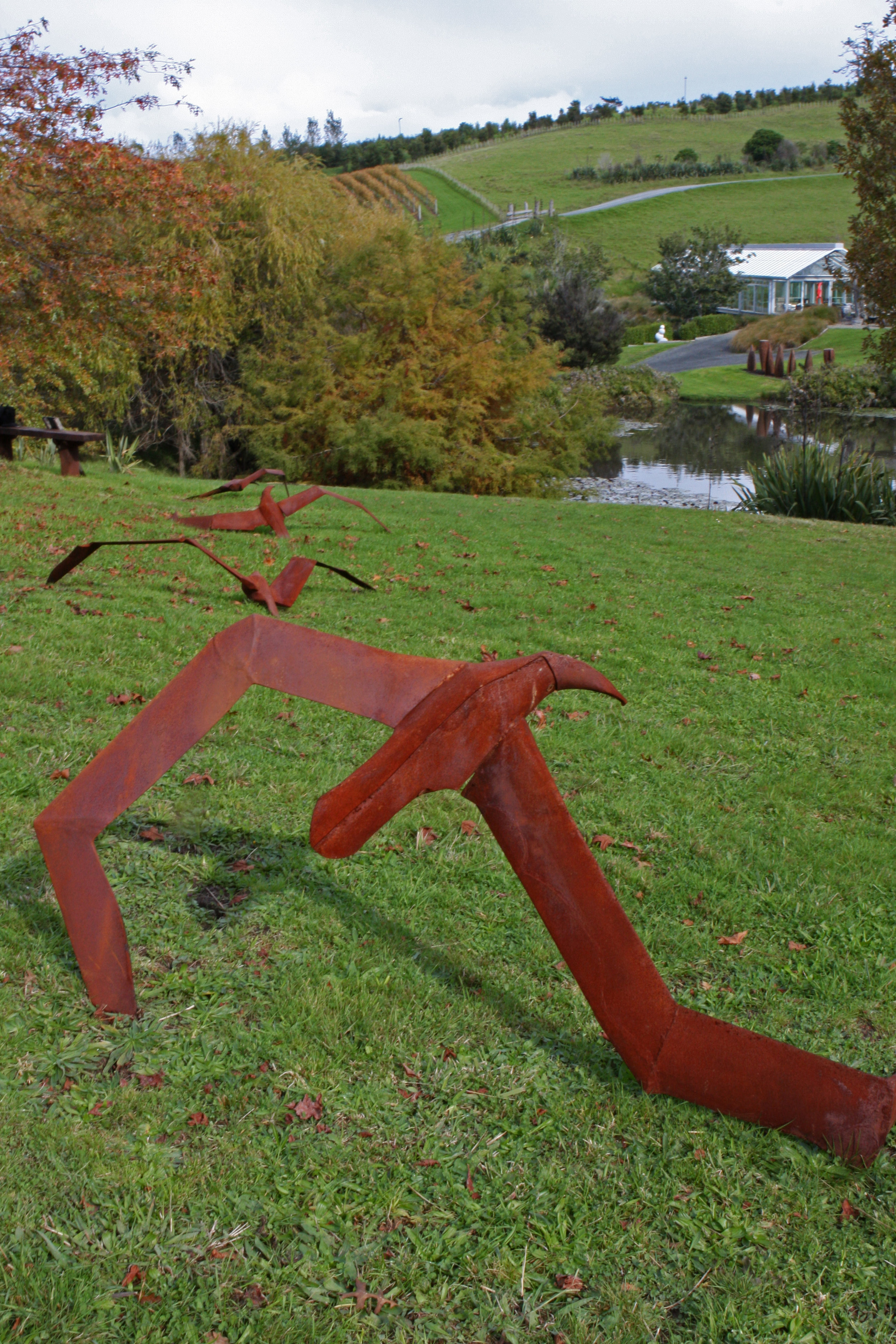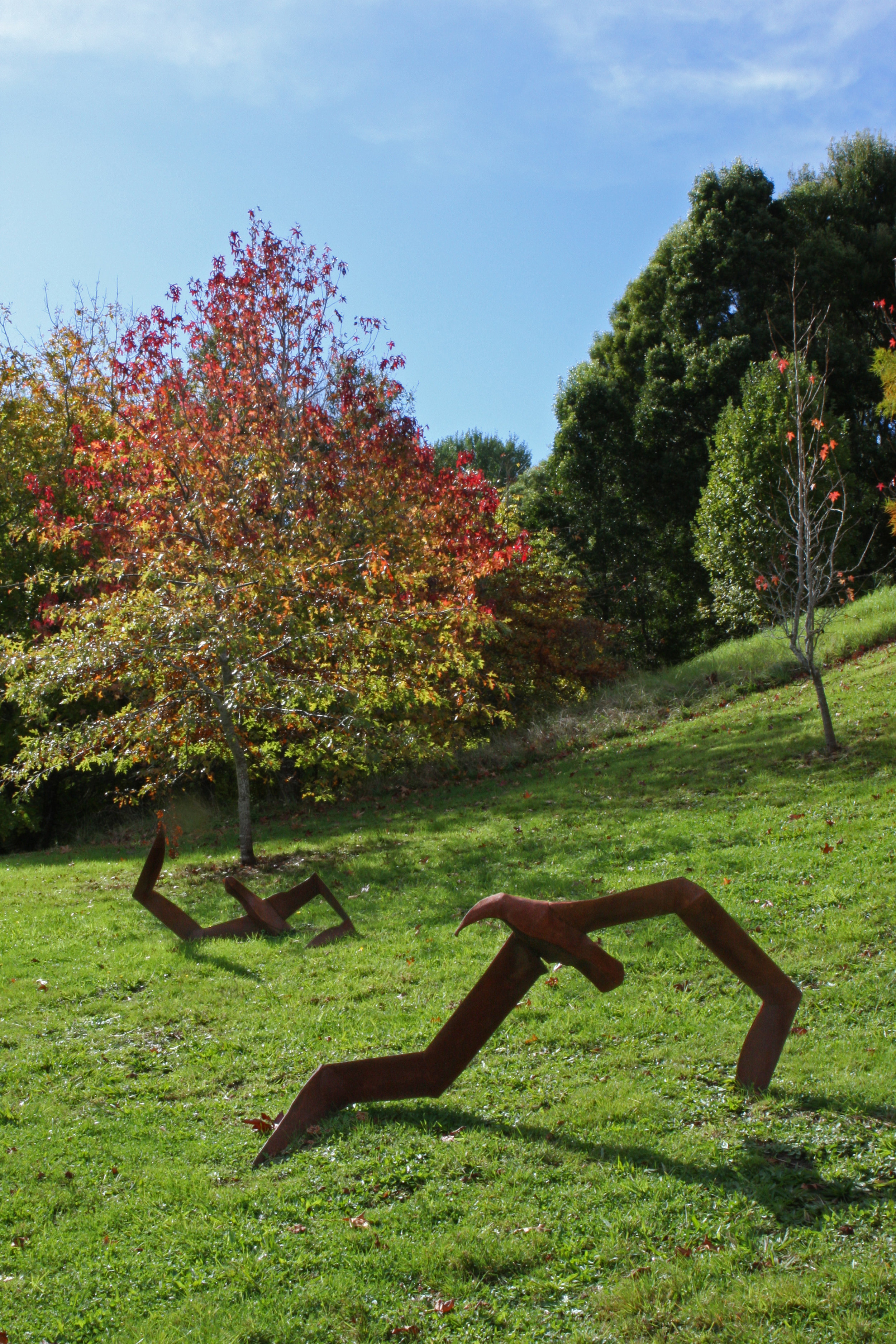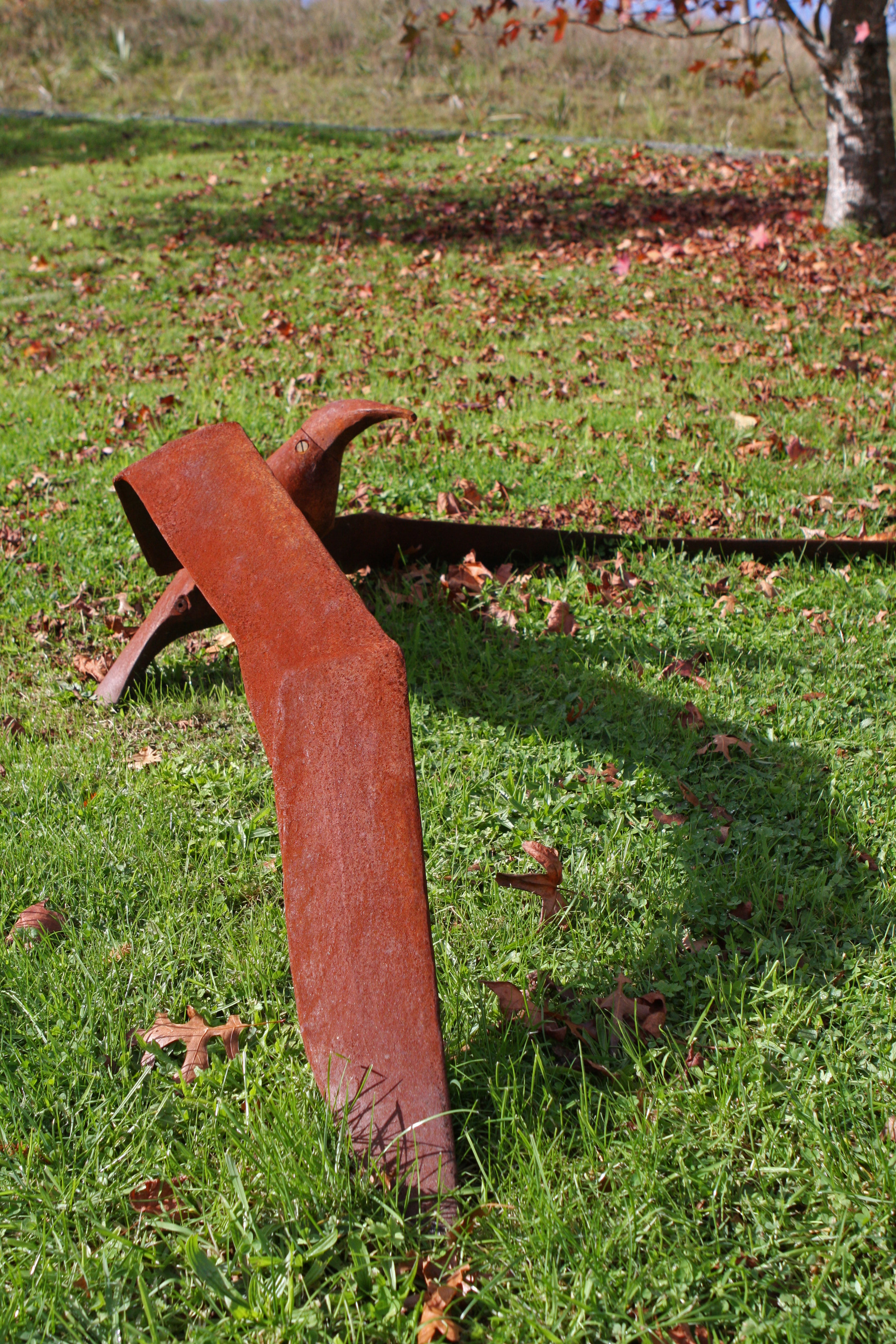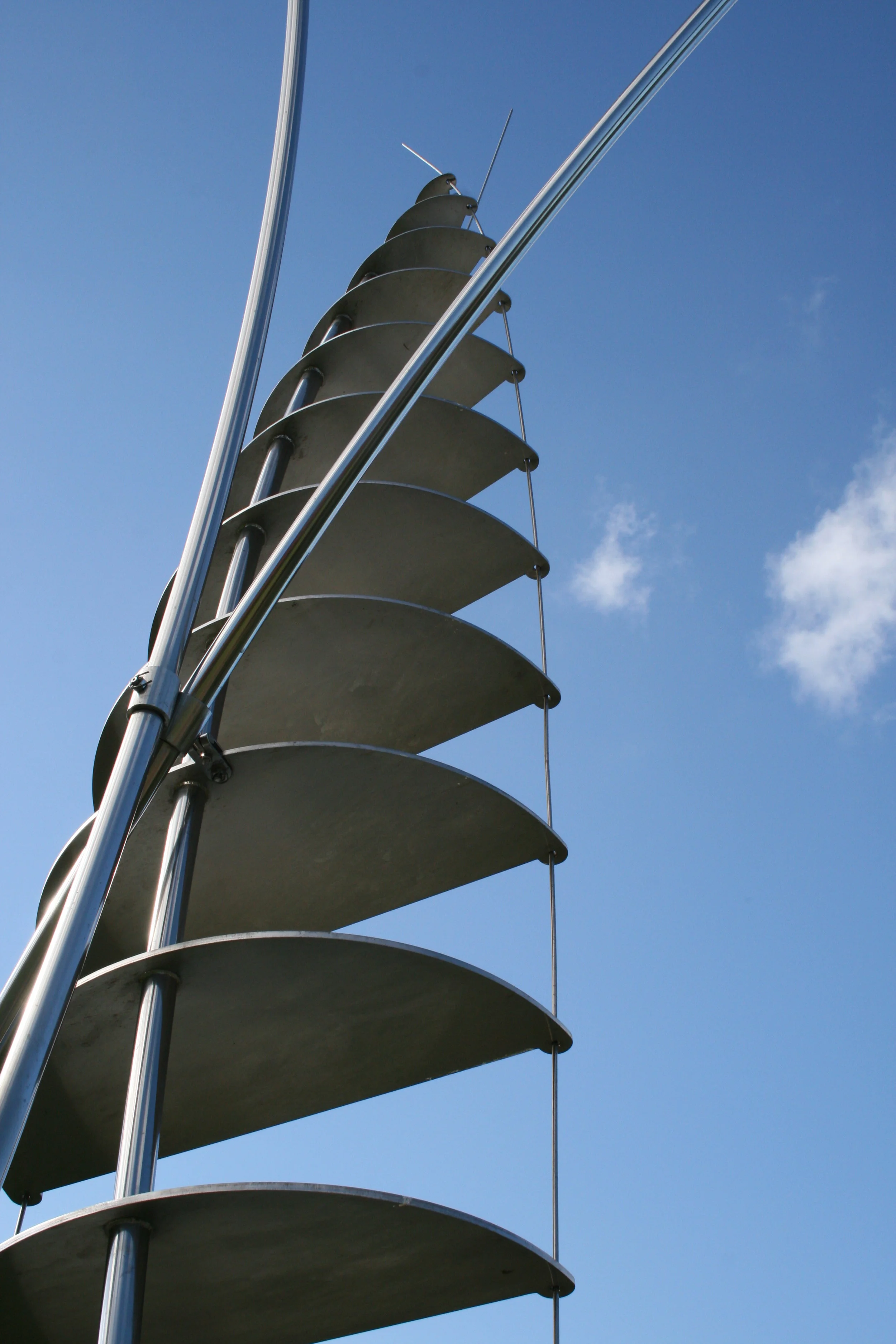Work: Tumbling Albatross
Year: 2009
Construction: Cast iron
Size: Various, each sculpture approx. 700 x 2000 x 1100mm
Description:
The five albatross that tumble across the grass at Brick Bay are the work of one of New Zealand’s most enduring and distinguished sculptors, Greer Twiss. These works are a continuation of a theme that has informed his work over recent years. They have developed out of the sculptor’s exploration of the albatross as a cultural icon of colonialism and European colonization of New Zealand. They can be seen in the context of Twiss’s work on endemic birds such as those in The Fernery at the Auckland Domain and his Flight Trainer for Albatross on Auckland’s CBD waterfront.
The incorporation of albatross in Twiss’s work started in 1999 when he was invited to make a work for the first sculpture show that raised funds for the New Zealand Women’s Refuge. The works were displayed Genevieve Becroft’s grounds on the shores of Lake Pupuke in Takapuna. Twiss wanted to create a work that explored the relationship between bird life and the land. He started with a seagull – but wanted something larger in scale for the outdoor show, so the seagull grew into an albatross. The albatross is inextricably linked with Samuel Taylor Coleridge’s poem The Rhyme of the Ancient Mariner. Coleridge is reputed to have used Captain Cook’s south seas journals among his readings for the poem. This interfaces with Twiss’s exploration of colonialism, symbolized in his works by bowler hats, muskets, flags, flowers and introduced species – so the albatross just followed naturally.
In the latest albatross works Greer Twiss is more interested in the tumbling movement and the flight of the albatross rather than any didactic message. In its own way this links right back to some of his earliest works which were explorations of human tumbling forms and to some of his most well known works, the athletes series. As is fitting for athletic or tumbling forms these albatross are flexible and can be installed in a variety of ways. They offer a range of possibility for display; they can be lifted and turned to balance on either wing or on the head and can be moved about as their environment changes.
Other Works


